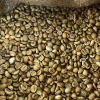Ethiopian coffee is the best coffee in the world, or at least that is what many people across the world claim. Ethiopian coffee has been acclaimed for its flavor profiles and rich history; therefore, it is a culture-rich product. Coffee in Ethiopia is not only a drink; it is part of history, hospitality, and culture.
We’re going to dig deeper in this blog into what makes Ethiopian coffee special, the regions it’s grown in, and how it is harvested and processed to become the flavorful cup you drink.
What is Ethiopian Coffee?
Many say that the birthplace of coffee is Ethiopia. Legend has it that a goat herder by the name of Kaldi discovered coffee hundreds of years ago when he saw his goats jump with energetic activity after feeding on red cherries from a specific tree. The story may be cute, but it actually tells how deep the relationship between Ethiopia and coffee is.
What’s so special about Ethiopian coffee is the tremendous diversity. There are thousands of indigenous heirloom varieties of coffee plants grown in Ethiopia forests. The heirloom varieties are those which introduce unique flavors and flavor profiles that characterize Ethiopian coffee, such as floral and fruity and earthy and spicy, to mention but a few.
The most common flavor notes that people find in Ethiopian coffee are:
- Citrus or berry brightness
- Floral fragrances with touches of jasmine or bergamot
- Some have undertones of chocolate or nuts
You’ll always have a choice of light, medium, or dark roast and taste the flavor of Ethiopian coffee, unlike others when comparing the rest of the world for coffees grown in those areas.
Regions of Ethiopia that Produce Excellent Coffees
Certain areas of Ethiopia stand out with amazing quality production of coffees thanks to specific flavoring they owe from climate, soil, and altitude. Some of those areas include:
1. Yirgacheffe
The high altitudes in this coffee are just as plentiful in citrus and floral flavours as they are in depth.
2. Sidamo
Sidamo has a pleasant and well-balanced flavor with fruity as well as floral elements along with a smooth finish, and such kind of coffee is versatile coffee, which works great over any brewing process.
3. Harrar
This is still the most famous of Harrar Ethiopia coffees; the flavor, though very often likes to resemble strong, full-bodied wines such as flavors that resemble berries or chocolates or spice. It grows in the eastern part of Ethiopia.
4. Guji
The newest favorite among aficionados of coffee is Guji, which flavors very sweet and fruity, with peach and mango, as well as apricot flavors.
5. Limu
Lighter to taste, this is balanced to perfection with citrus and spice hints to it. Compared with most of those grown in Ethiopia, the acidity level is particularly low here. It’s for that reason anybody who enjoys less acidic brews will look out for this brew.
How Is Coffee Grown in Ethiopia?
There are three main growing environments for Ethiopian coffee
Forest Coffee
Coffee in Ethiopia grows naturally on the floor of the forests. It is here that the beans germinate, unvisited by man.
Garden Coffee
Farmers grow coffee in their gardens. They mainly intercrop with other crops. This is the main form of farming coffee in Ethiopia. Family members hand-raise the coffee plants.
Plantation Coffee
These are large farms or estates where the coffee is grown, and usually, an organized system is involved while normally for export.
Ethiopian coffee grows in high-altitude regions that are the ideal place because the cool temperatures and favorable soils make it an excellent region for developing high-quality coffee.
Harvesting Process
This is the Ethiopian method of coffee harvesting that is gentle and very time-consuming. It is because of the fact that it needs to be picked when close to when they are ripe for the perfect flavor to be acquired. Here’s the step-by-step of how it’s done:
Picking the Cherries
Since ripening differs in coffee cherries, cherry picking has to be always done through hand picking. This limits the picking to only cherries that show red color and are plumpy and ready. Thus, they become of the highest grade. The process, therefore, is termed “selective picking.”
Picking is very selective, which takes much time. High-grade coffee requires one to make several trips to go through the plants over successive weeks to get ripe cherries.
Sorting the Cherries
After picking, the cherries are sorted to separate those that may not have ripened or are damaged. This is one of the quality steps for the final product. Sorting is mostly done by hand to ensure only the best cherries go through the subsequent stages.
Processing Ethiopian Coffee
After picking and hand-sorting, cherries are processed so that beans get separated from the fruit. Ethiopian coffee comes in two major ways of processing, as follows:
1. Washed (Wet) Process
This process involves pulping the coffee cherries to remove the outer skin and fermenting them in water to remove anything left over from the fruit, which will get washed and dried afterward.
Flavor Profile: Bright, clean and crisp flavors with fruit and floral notes define most washed coffees.
Regional Varieties Known for Washed Coffee: Yirgacheffe and Sidamo.
2. The Natural (Dry) Process
The natural process has the cherries spread out on a drying bed in the sun where they dry the whole body of the cherry.
The beans are taken out from the fruit once the cherries dry out.
Flavor Profile: Natural coffee is said to be full-bodied, fruitier, and almost wine-like flavoring.
Regions Known for Natural Coffee: Harrar and some parts of Guji.
Drying the Beans
Drying, regardless of what is used in processing, cannot be avoided. The beans are spread on raised beds or patios and sun-dried. The farmers turn the beans frequently so that the beans dry evenly and do not become mouldy.
It depends on the weather and can, therefore, take up to two weeks in waiting to be able to do that. After getting the required moisture content ranging within 10-12%, they are then ready for keeping or shipment.
Sorting and Grading
They should, therefore, pass through the hulling process through the removal of either the parchment layer in washed processing or the dried fruit layer when they pass through natural. Bean size and shape are aside from quality evaluation, sorted.
The Ethiopian coffee has been graded the quality level. The highest in its level of classification goes to Grade 1. They assure that the quality beans will get exportation and distribution.
Sustainability and Tradition
Most farmers engage themselves in organic farming through their time-honored traditions of growing their coffee. Most of the fertilizers they apply on the plants are natural fertilizers and are attended to by hand.
The coffee industry also plays a very important role in the economy of Ethiopia because it sustains the livelihood of millions of people. Enjoying Ethiopian coffee not only pleases your taste buds but also helps sustain those communities.
Why Is It That Most People View Their Ethiopian Coffee as Unique?
That is to say, here is how most of them stand out:
Unique varieties
Ethiopia has some coffee variety than any country in the world. Such diverse flavor tastes have never been found at any other destination.
Mostly farmed traditionally because it helps conserve nature and makes one’s taste buds appreciate well.
Good altitudes: Many of those mountains and also cool temperatures favor quality beans
Ethiopian coffee
Fresh, it should be. Cultural Experience: The Ethiopian traditional coffee ceremony is a cultural experience. A person roasts grinds, and brews right in front of the guests as a way of welcoming and showing respect.
Today, Ethiopian coffee is prepared by different techniques – pour-over, French press, or even espresso, so that unique taste comes alive to this drink.
Conclusion:
Ethiopia does not only drink it. It has to do much with history, culture, and custom; their history with the discovery and long harvest adding quality and flavor to it.
It’s always a kind of adventure whether you are just interested in where your favorite cup comes from or are actually a coffee connoisseur; it is an adventure to embark on Ethiopian coffee. Next time you take a sip of an Ethiopian coffee, appreciate the effort that has gone into producing the same.


